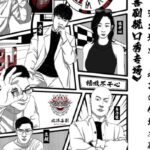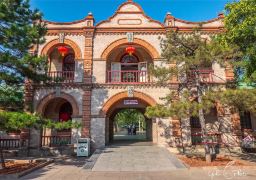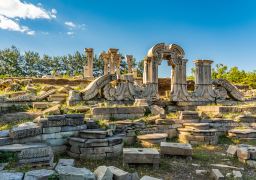The Russian National Ballet Theatre’s new edition of 2025, a magnificent ballet extravaganza. Overview of the ballet ‘The Nutcracker’. ‘The Nutcracker’ is a classic ballet created by Russian composer Pyotr Ilyich Tchaikovsky and adapted from the fairy tale ‘The Nutcracker and the Mouse King’ by German writer Ernst Theodor Amadeus Hoffmann. This ballet is renowned for its magnificent and spectacular scenes, humorous and interesting performances, and Tchaikovsky’s music. It is hailed as the ‘Christmas ballet’ and has become one of the world’s finest ballets. The whole play has two acts and three scenes. The ballet is filled with pure and mysterious mythological elements and has strong characteristics of children’s music. This work is one of Tchaikovsky’s three representative ballets and also one of the enduring masterpieces on the world dance stage, depicting the unique world of children. The story tells that on Christmas, a girl named Marie receives a nutcracker. At night, she dreams that this nutcracker turns into a prince who leads a group of her toys to fight against the mouse soldiers. Later, the prince takes her to the jam mountain and is welcomed by the candy fairy. She enjoys the happiness of toys, dances, and a feast. The whole story is filled with fairytale fantasies and fantastical adventures, showing the innocent world of children and adults’ nostalgia for childhood. Musical characteristics. ‘The Nutcracker’ is a typical late work of Tchaikovsky, with extremely delicate use of string instruments. The Nutcracker dance music makes the background of the work shine brightly and shows a rare realistic portrayal in general music, especially the children’s voices in the ‘Waltz of the Snowflakes’ and the children’s instruments in other music of the first act. The music composed for traditional instruments is also full of creativity. Especially in the interlude of the second act, Spanish dance represents chocolate, Arabian dance represents coffee, and Chinese dance represents tea. But the most wonderful part of the whole piece is still the celesta solo in ‘The Sugar Plum Fairy’. According to the description of the script, it charmingly suggests that water droplets’splash from the fountain’. In places where the melody is relatively plain, Tchaikovsky’s treatment is still outstanding. The motif of the ‘Pas de Deux’ in the second act is just a simple descending scale. However, the harmony, phrasing, and warm string tone give it powerful emotion. Tchaikovsky’s orchestra transcends the theme in the overture: instead of using cellos and bass instruments, he divides it into six parts with violins and violas. He adds triangles and piccolos to simulate the sound of a classical orchestra. This overture is shiny and full of childlike fun. Although not large in scale, it is filled with clear tones and is just right for Christmas Eve.
The suite begins with an overture, followed by the march from the first act and the ‘Dance of the Sugar Plum Fairy’ from the second act’s pas de deux. Next comes the second act, featuring four pieces from the interlude: the Russian Dance, Arabian Dance, Chinese Dance, and the Mirliton Dance, culminating in the ‘Waltz of the Flowers’ from the second act, one of Tchaikovsky’s most famous waltzes. The suite, extracted from the ballet, is deeply loved by the public. There are various versions of the suite, with different compositions and sequences of tracks. Tchaikovsky himself selected one version, while another version appeared in Disney’s Fantasia, re-edited to depict the characteristics of the four seasons in nature.
The ‘Overture’ is a charming and elegant piece, quite lively and graceful, serving as a bright and brisk opening music. The music begins with the first and second violins and viola providing the bass, creating a clear and bright tone. This short overture starts with a lively and cheerful first theme, followed by the introduction of a beautiful and quiet second theme. On Christmas Eve, adults are busy preparing for the holiday, while children fantasize about receiving the gifts they have in mind. The ‘March’ is the entry music for the first act on Christmas night, where Clara and the neighborhood children perform a dance in front of the guests, a lively and lovely march. It begins with the clarinet and French horn announcing the children’s entry, followed by the violin playing a light and naive music, representing the children’s joy and exuberance. The ‘Dance of the Sugar Plum Fairy’ is the scene music for the Candy Kingdom in the second act. It depicts the second act of the ballet where the prince (the Nutcracker’s embodiment) takes little Clara to the magical Candy Kingdom, and the Sugar Plum Fairy dances to welcome them. Over the pleasant accompaniment of the harp, the enchanting sound of the glockenspiel plays a gentle melody, signifying the arrival of the gentle and beautiful Sugar Plum Fairy. Scene 1, Act 1: In front of the Stahlbaum’s house in the early 19th century, in Nuremberg, Germany, the Stahlbaum family is hosting a Christmas party. Daughter Clara, son Fritz, and the whole family are at the door to welcome the guests. Scene 2, Act 1: The Christmas party begins at the Stahlbaum’s living room. Clara’s godfather, Drosselmeyer, brings a beautiful and large hand-cranked music box, from which he takes out a lovely girl, a funny clown, and a strong Arab puppet to perform for the children. Finally, Drosselmeyer presents the unassuming Nutcracker, and Clara asks Drosselmeyer to give her the puppet. She holds the Nutcracker and quietly falls asleep. Scene 3, Act 1: Clara is awakened from her sleep and sees the seven-headed Mouse King leading a large group of mice to take away the Nutcracker.The Nutcracker suddenly grew larger and commanded the puppets and the army of mice to engage in a great battle. Clara was frightened and fainted by this scene. When she woke up, the Nutcracker broke the mouse’s magic and turned into a handsome prince. The prince invited Clara to be his guest in the candy kingdom he ruled. The two got on a wooden horse and embarked on a journey. Act 1, Scene 4 Snow Country The prince and Clara came to the snow country, which is a glittering world. The Snow Queen and the king led the snow spirits to turn into falling snowflakes and danced to welcome them. Clara received a beautiful shawl from the queen and the king and set off again with the prince. Act 2, Scene 1 Snow Country When the water sprites saw the wooden boat on which Clara and the prince were riding, they made a commotion. A gust of cold wind blew, and the mice that had not been completely eliminated came to counterattack again, but in the end they all lost their lives under the prince’s sword. Act 2, Scene 2 Capital of the Candy Kingdom After eliminating the mice, Clara and the prince came to the candy kingdom, a luxurious palace built with various pastries. Spirits of all kinds such as chocolate, sugar beans, and cream danced a magnificent dance to welcome them. Clara and the prince danced a pas de deux that is danced as a wedding ceremony in the candy kingdom. Clara had unknowingly fallen deeply in love with the prince, but also vaguely felt that the prince would leave her far away. With this uneasiness, Clara fell asleep quietly. Act 2, Scene 3 In front of the Shultalbaum family’s house The Christmas party ended. The godfather gently put a white shawl on Clara’s shoulders and then drove away in a sleigh. Clara reminisced about the wonderful time spent with the prince, holding the Nutcracker and standing for a long time in the falling snow. The Christmas night grew deeper and deeper… This story is really romantic enough and thought-provoking enough. The original text of ‘The Nutcracker’ is not long, but it has remained popular two hundred years after its publication. It has touched countless children and adults and turned into a pearl of the initial memory of life. Purity and love are timeless themes in literary works. So until today, ‘The Nutcracker’ still attracts generations of audiences and readers to cherish the lost childhood and the precious true feelings in the world. Full text opening time: Sunday, December 22. Performance start time: 19:30. The specific performance duration is subject to the site.









